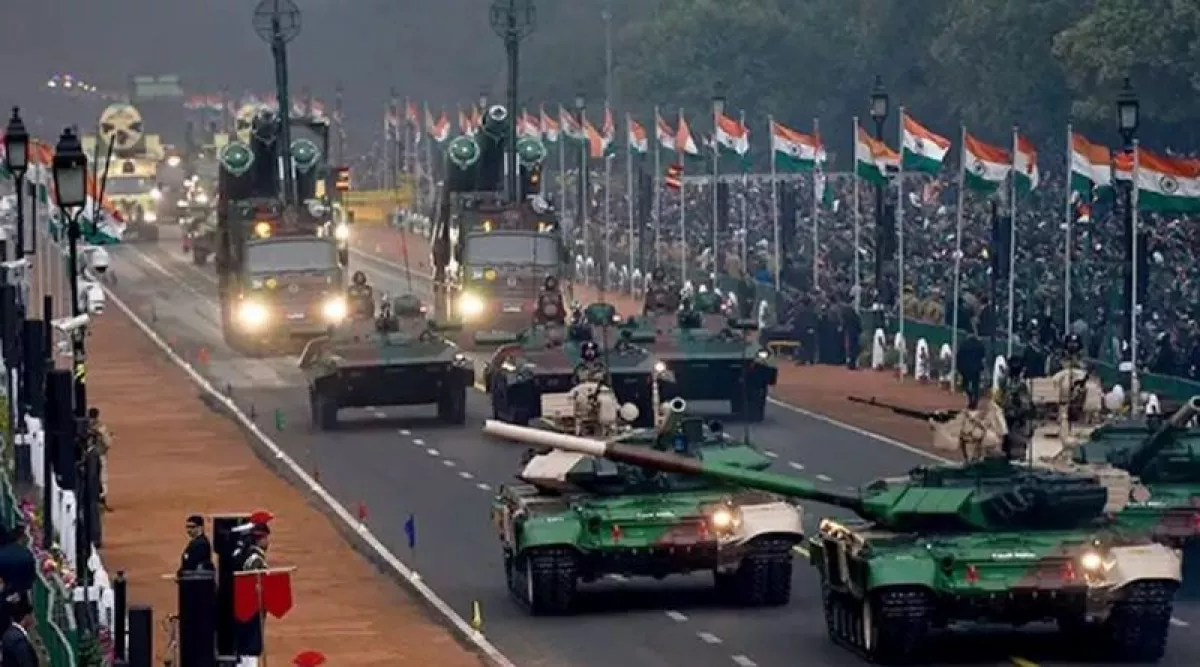Shared goals, rising flames: How US and India stoke South Caucasus tensions Evaluating risky gamble of rearming Yerevan
The US appears to be significantly advancing India's military capabilities. According to ANI, a prominent news agency in India and South Asia, the US will soon supply the Indian Navy with hydroacoustic anti-submarine buoys (HAASW) valued at $52.8 million to enhance submarine detection. This deal includes three versions of the anti-submarine buoys, along with comprehensive documentation, and technical, and logistical support.
“The upcoming sale will support U.S. foreign policy and security objectives. The deliveries will help strengthen the strategic relationship between the United States and India, ensuring the security of this major defence partner that remains a crucial force for maintaining political stability, peace, and economic stability in the Indo-Pacific region and South Asia,” ANI reported, citing a statement from the Pentagon's Defense and Security Cooperation Agency.
This is not the only arms deal between the US and India this year. In early February, the US State Department approved a $3.99 billion package for India, which includes 31 Sky Guardian modular reconnaissance and strike drones, Hellfire air-to-ground missiles, and additional equipment.
For context, the Sky Guardian is a variant of the MQ-9 Reaper drone, adapted for reconnaissance and strike missions.

Active arms trade between India and the US began as early as 2008, but it wasn’t until 2016 that the US Congress officially recognized India as a major defence partner. Since then, open sources reveal that India has acquired arms and other defence equipment from the United States amounting to approximately $20 billion.
For India, which has been aiming to establish itself as a prominent player in the global arms market, its military cooperation with the US offers substantial benefits. This partnership not only bolsters India’s defence capabilities but also aligns with its broader ambitions in global and regional politics.
In light of these developments, it is crucial to explore how closely aligned the military interests of the US and India are, and the implications of this partnership for both nations' strategic goals.
Is India’s position a double win-win scenario?
The strengthening of military cooperation between Washington and New Delhi appears to benefit both nations, with India finding itself in a potentially advantageous position. The United States views its partnership with India as a crucial component of its strategy to counterbalance China's influence in the region. India, for its part, supports this strategy, though its actions often consist of strong rhetoric rather than concrete measures against Beijing.
As reported by NDTV, Indian Defence Minister Rajnath Singh emphasized at the 2+2 meeting of Indian and US foreign ministers in New Delhi that collaboration with the US on strategic matters, including “countering China’s aggression,” is deemed “critical.” Despite this, ongoing border disputes with China over regions like Aksai Chin and South Tibet, as well as the PRC-Pakistan military and political alliance, have not significantly disrupted the expanding economic ties between China and India.

While the US views India as a key ally to counterbalance Beijing's growing global influence, India benefits not only from this strategic partnership but also from significant technological advancements. According to Reuters, New Delhi is increasing its arms purchases from the US primarily to gain access to advanced military technology and bolster its own defence industry. In this context, US Ambassador to India Eric Garcetti revealed in an interview with Reuters that Washington is highly invested in defence cooperation with India and is "willing to share military technologies with India even more than with its closest partners."
New Delhi and Washington's shared interests in the South Caucasus
Beyond their aligned stance on "containing" China, the US and India find common ground in several global regions, notably in the South Caucasus.
Both nations are actively working to militarize Armenia. Currently, India is a major arms supplier to Yerevan, and the US not only supports these military supplies but also directly contributes arms to Armenia.
Since 2020, Armenia has nearly doubled its military budget. In 2020, military spending was $785 million; by 2023, it had risen to $1.3 billion, with projections for 2024 reaching $1.4 billion.
Earlier, Caliber.Az also reported, citing reliable sources, that two US military planes departing from bases in Romania and the Middle East landed at Yerevan's Zvartnots International Airport on 2 and 3 August. The two Boeing C-17 aircraft belonging to the US armed forces delivered servicemen and military cargo to Armenia. According to Caliber.Az, the latest deliveries were carried out within the framework of the military agreement between Armenia and the United States, signed on April 5 in Brussels in the US-EU-Armenia format.

Since 2021, Armenia has been acquiring a range of military equipment from India, including missiles, artillery systems, and air defence systems. According to India's IADN agency, the total value of Armenia's purchases from India for the period 2024-2025 alone is projected to reach $600 million. This year has already seen several significant agreements between India and Armenia for artillery guns and air defence systems.
Armenian media report that Armenia has become a major client of Indian defence companies, both public and private, with purchases extending from artillery systems and Pinaka multi-barrel rocket launchers to small arms and ammunition.

Following Azerbaijan's unilateral restoration of its territorial integrity and sovereignty over Karabakh, Washington appears to endorse any military support to Armenia, including arms from India. Despite both the US and India formally backing Azerbaijan's territorial integrity, their interests align in fostering instability in the South Caucasus.
Baku has long anticipated and prepared for such scenarios, demonstrating readiness for various outcomes. Consequently, Yerevan should carefully evaluate whether the risks of engaging in provocations encouraged by Indian and American interests are truly warranted.
In response, Baku has repeatedly voiced its concerns over these Indian arms supplies to Armenia, criticizing the rearming of the Armenian military and the potential for fostering a false sense of military resurgence within Yerevan's leadership.








